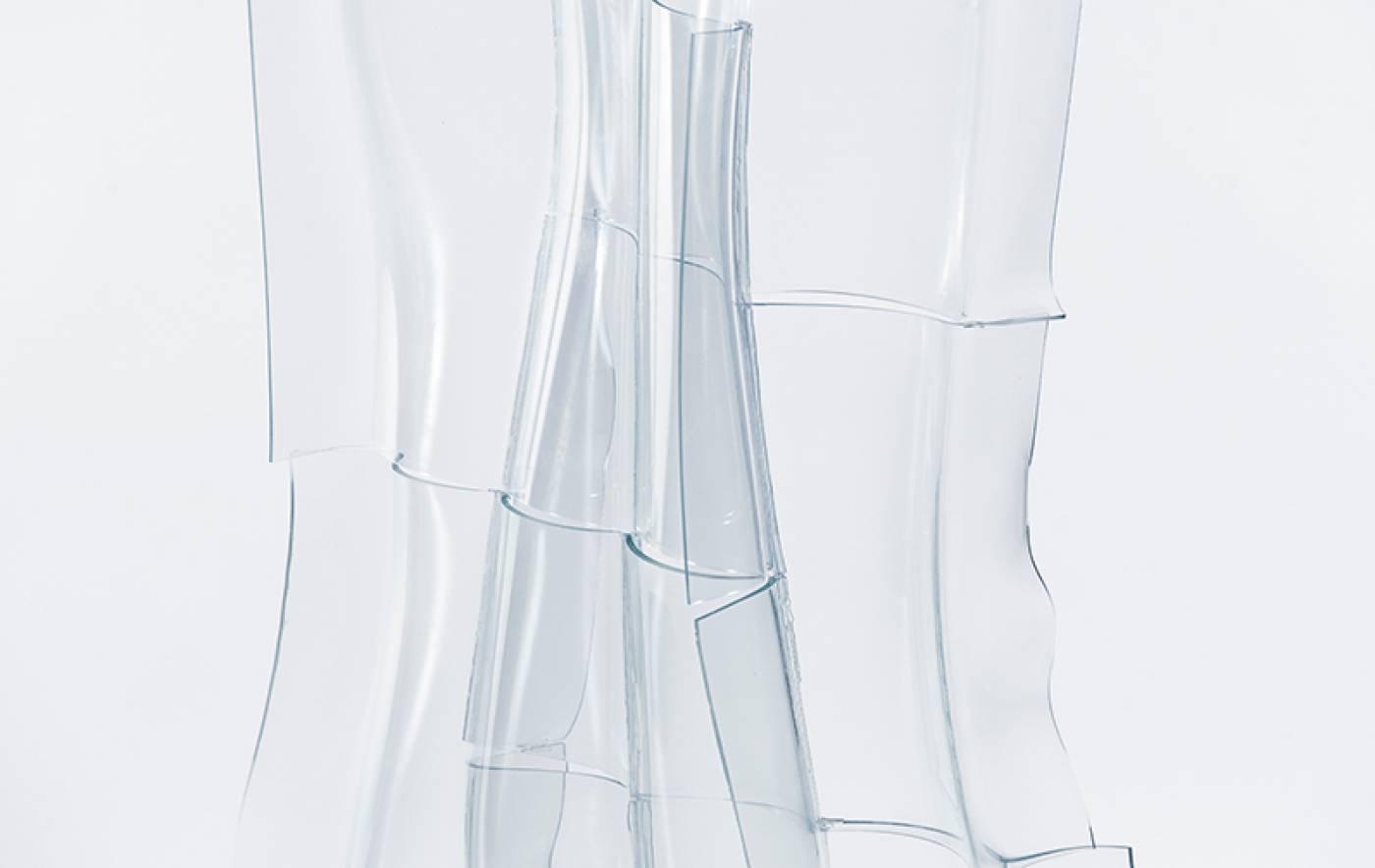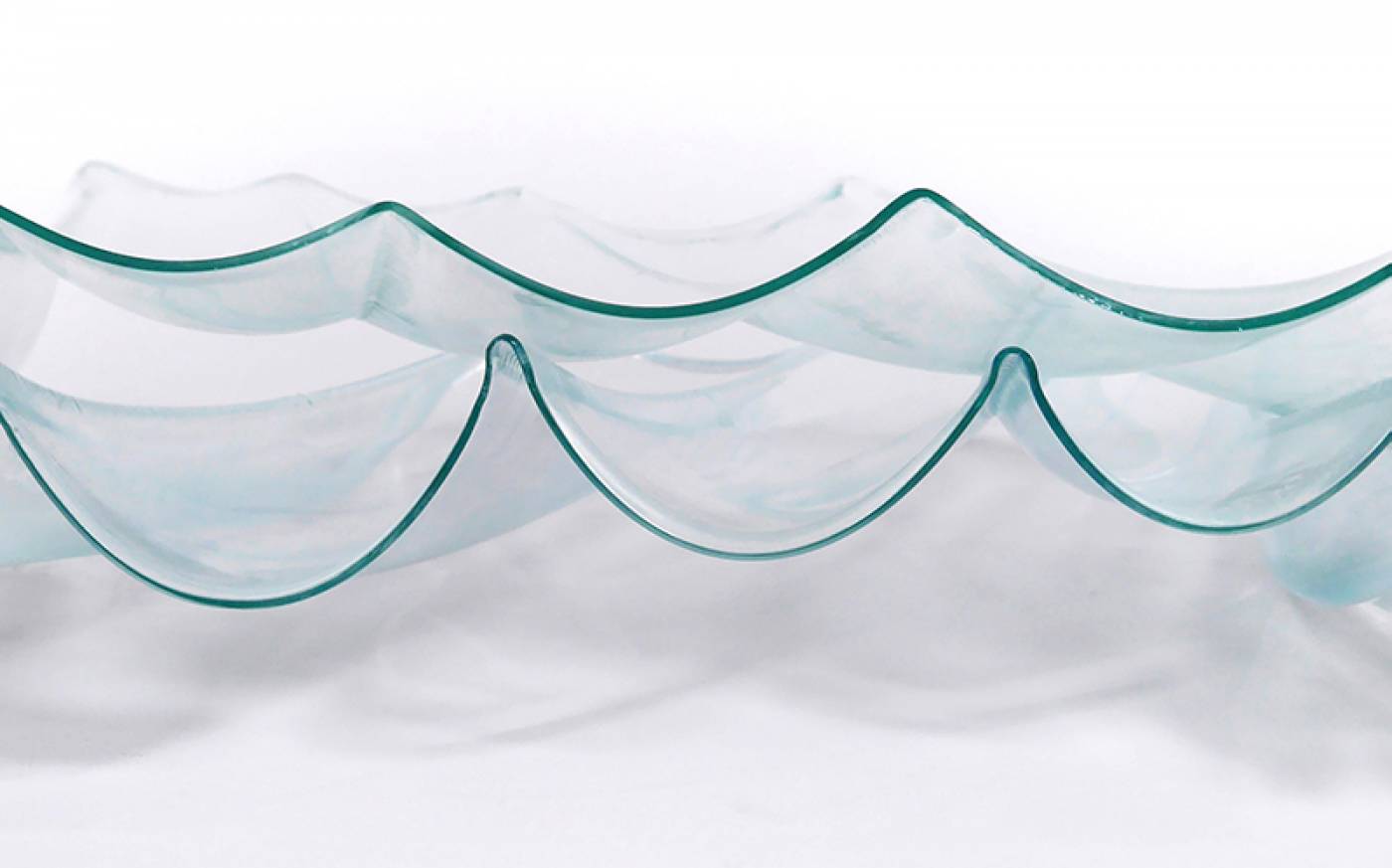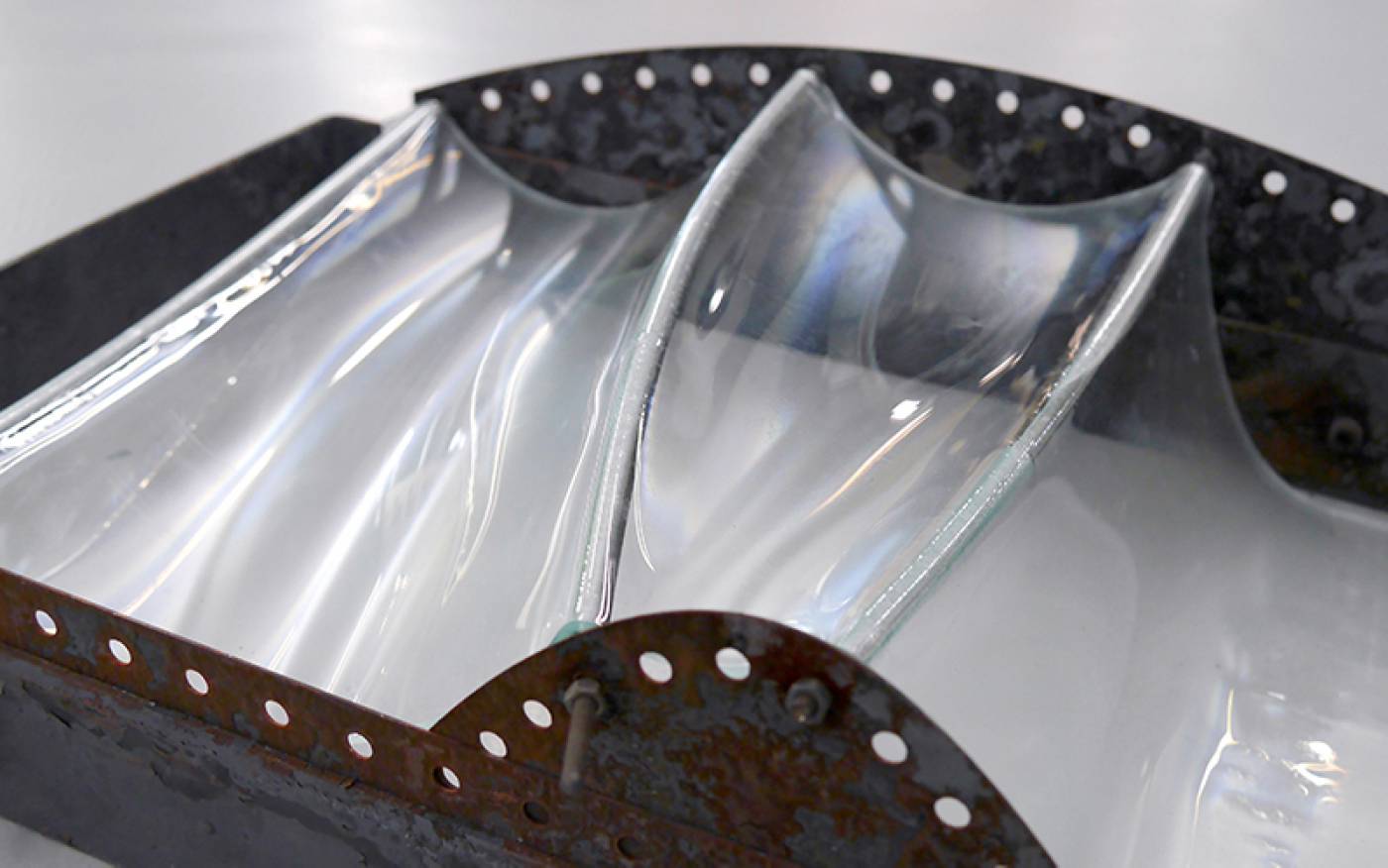Małgorzata (Gosia) Pawłowska
This investigation explores the challenges and opportunities in fabricating a free-form architectural glass assembly. At once resilient and fragile, transparent and substantial, thin membrane and amorphous matter, the essence of glass as a material remains elusive to most designers, despite its major presence in the built environment.
How can architecture benefit from integrating the inherent ‘material intelligence’ of glass? By analysing traditional techniques of craftsmanship along with contemporary industrial manufacturing standards, new approaches are demonstrated through a series of prototypes that explore geometry, assembly, alignment, adhesives, and lamination in glass structures.
The final proposal for ‘catenary channel glass’ capitalises on the material’s viscous behaviour at high temperatures. When appropriately heated in a kiln, a softened sheet of glass will form draping curves due to gravity in-between sparsely placed control points or boundary profiles. These control points are then used to join a series of panels, resulting in a wall system that negotiates pre-determined and emergent morphologies specific to the material. The spatial and phenomenological qualities of glass are considered here to be of equal importance as its technical performance, striving to create a multi-faceted experience of light and transparency in architectural space.



- Images
1. Prototype of double-layer glass assembly.
2. Catenary curvature in kiln-formed glass panels.
3. Repositionable tooling system for glass slumping.
 Close
Close

